Is there a difference between the imagery created by the fashion illustrators from the early twentieth century to the 1950s and those since the 1990s? Research historic and contemporary examples of fashion illustration by looking magazines, accessing internet resources or visiting galleries. Has fashion illustration changed over this period or is it the fashion of illustration that has changed? What about the missing decades of the 1960s, 70s and 80s? Was there no fashion illustration taking place during this period?
Brief Overview of Fashion Illustration Since 1900
N.B. I have focused mostly on female fashion for this exercise.
At the beginning of the twentieth century fashion for the well-off, ‘trendy’ woman consisted of plentiful embellishments (high necks, frills, laces, rigid corsets, large hats, feather boas, fur and lots of long layers of material). The clothes look incredibly uncomfortable and restrictive. The fashion illustrations from that period were intricately detailed drawings of a majestically posed model (in a standard, rigid position) often placed in front of a lavishly decorated studio background.
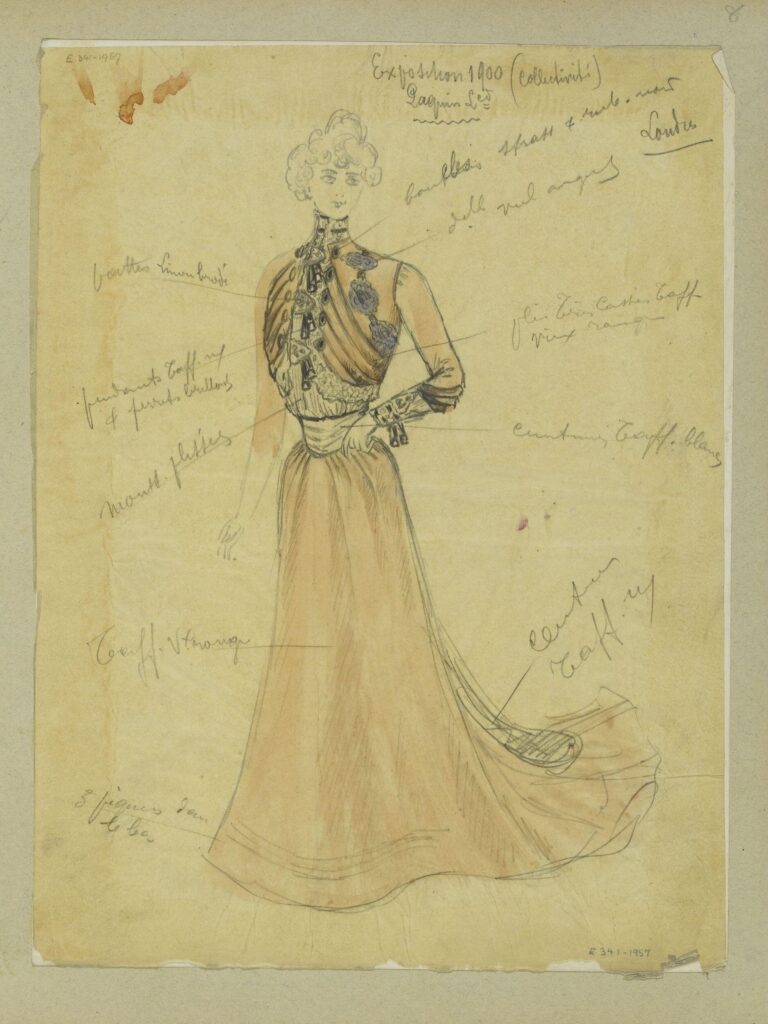
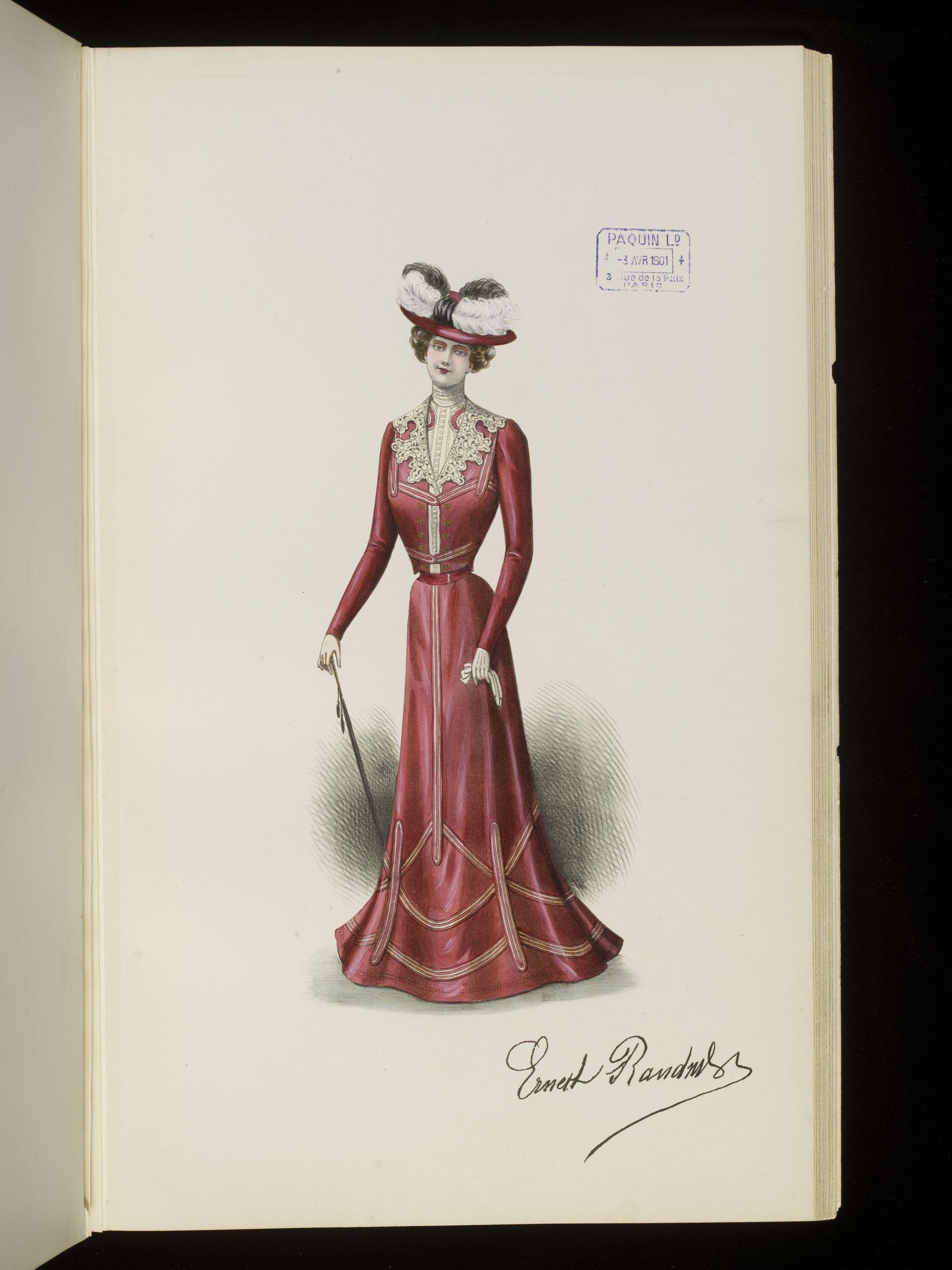
By the 1910s and during the First World War, fashion became less restrictive and more practical as women were required to work in factories and offices. The dresses became looser and slightly shorter, but perhaps one of the most notable developments was the abandonment of the tight corset that had previously been used to create the desired S-bend silhouette, which must have been a relief for the women! The illustrations, therefore, also gradually became less restrained and fussy.
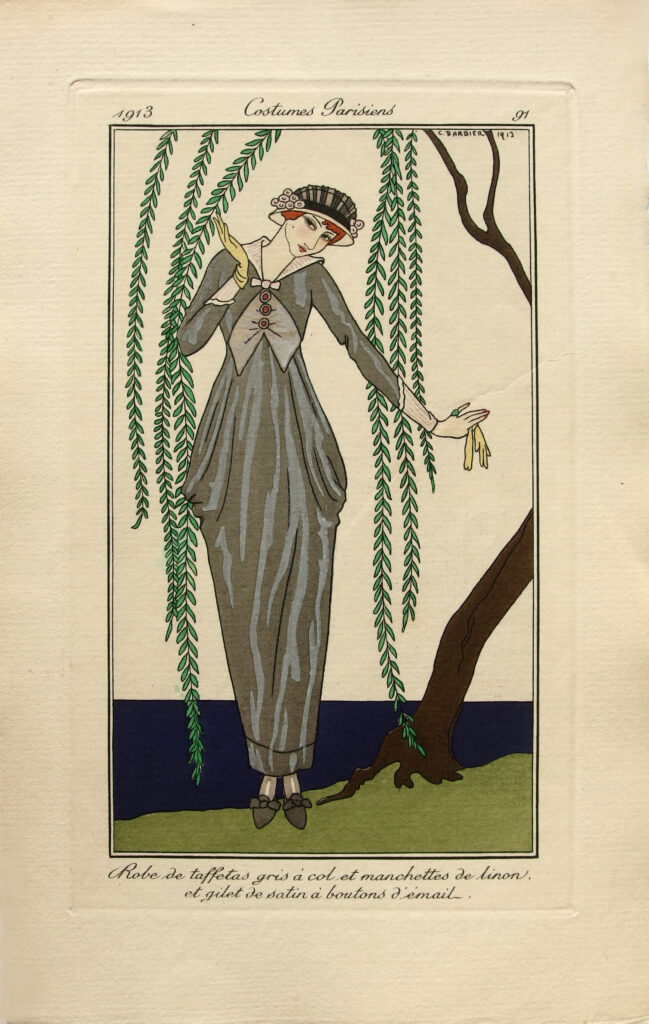
Following the war, in the 1920s, younger women became more emboldened with their new-found fashion freedoms and the sense of optimism (for the wealthier in society) created by the recovering economy, and so purposefully rebelled against the older generation’s style choices by cutting their hair short in ‘boyish’ crops and wearing shorter dresses/skirts cut to the knee. In general, the fashion for women became less composed The 1920s are often considered the golden age of fashion illustrations as magazines such as Vogue and Harper’s Bazaar used them extensively for their front covers and internal pages.
By the early 1930s, however, photography was beginning to infiltrate advertisements and the front covers of fashion magazines, – the use of illustrations began its steady decline. The 1930s also followed the economic crash at the end of the previous decade and the austerity of which had the impact on fashion of styles becoming simpler and less opulent. It also saw a return to more feminine styles.
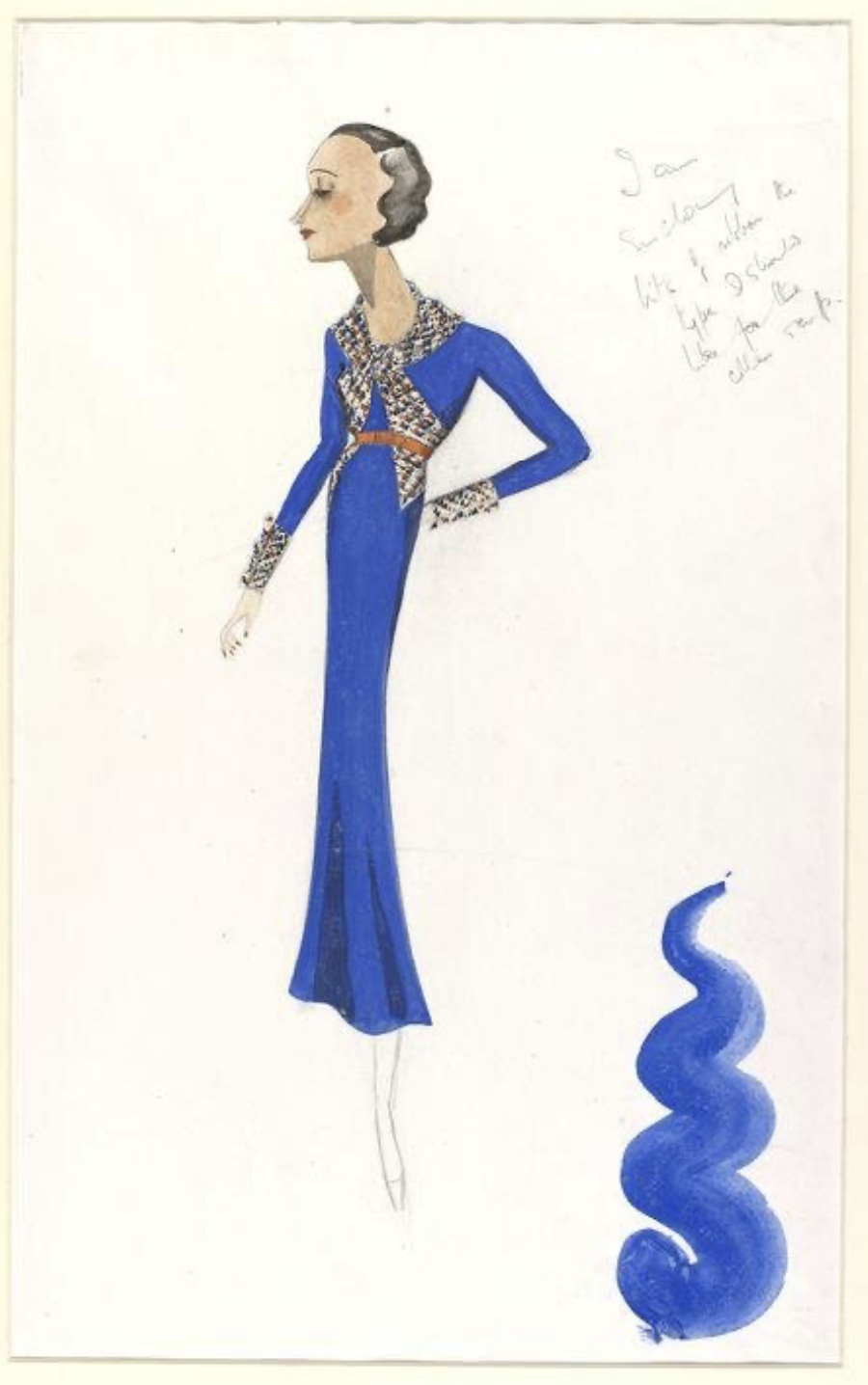
The fashion of the 1940s was greatly impacted by the Second World War as rationing meant limited access to materials. The style was quite reserved and military-influenced, but by the latter years of the decade, led by the French designer Christian Dior, a new, couture style began to emerge. Dubbed ‘The New Look’, it was defined by emphasising the hourglass figure, with a cinched-in waist. The illustration below by Majorie Field perfectly demonstrates how much fashion illustrations had progressed since the beginning of the century. The style is less rigid and the model looks more relaxed. Also, but this time, clothes were becoming more readily available ‘off the shelf’ and therefore a larger proportion of the general population had access to some of the fashionable designs being produced – it was not just reserved for the very wealthy of society.
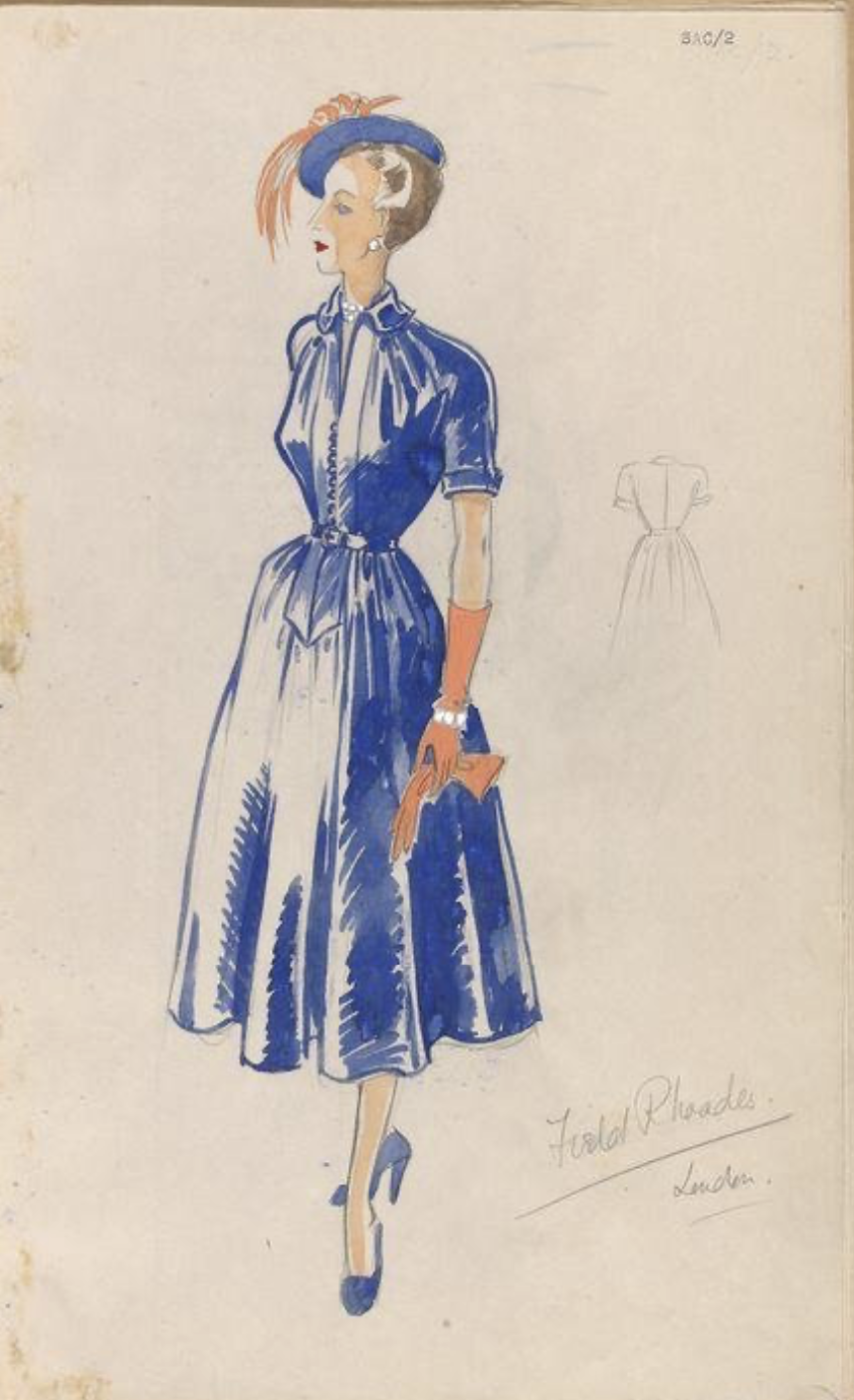
The 1950s began as a fairly successful time for fashion illustration, still a mainstay of the internal pages of fashion magazines at the time, but by the end of the decade photography had more or less replaced it. In addition, the prominence of ready-to-wear clothing and the rise of youth culture in the late 1950s led to a decline in the dominance of high-end, expensive fashion and therefore its related illustrations. However, there was still a market for illustrations of more glamorous famous, as demonstrated in the one below by Jean Demarchy.
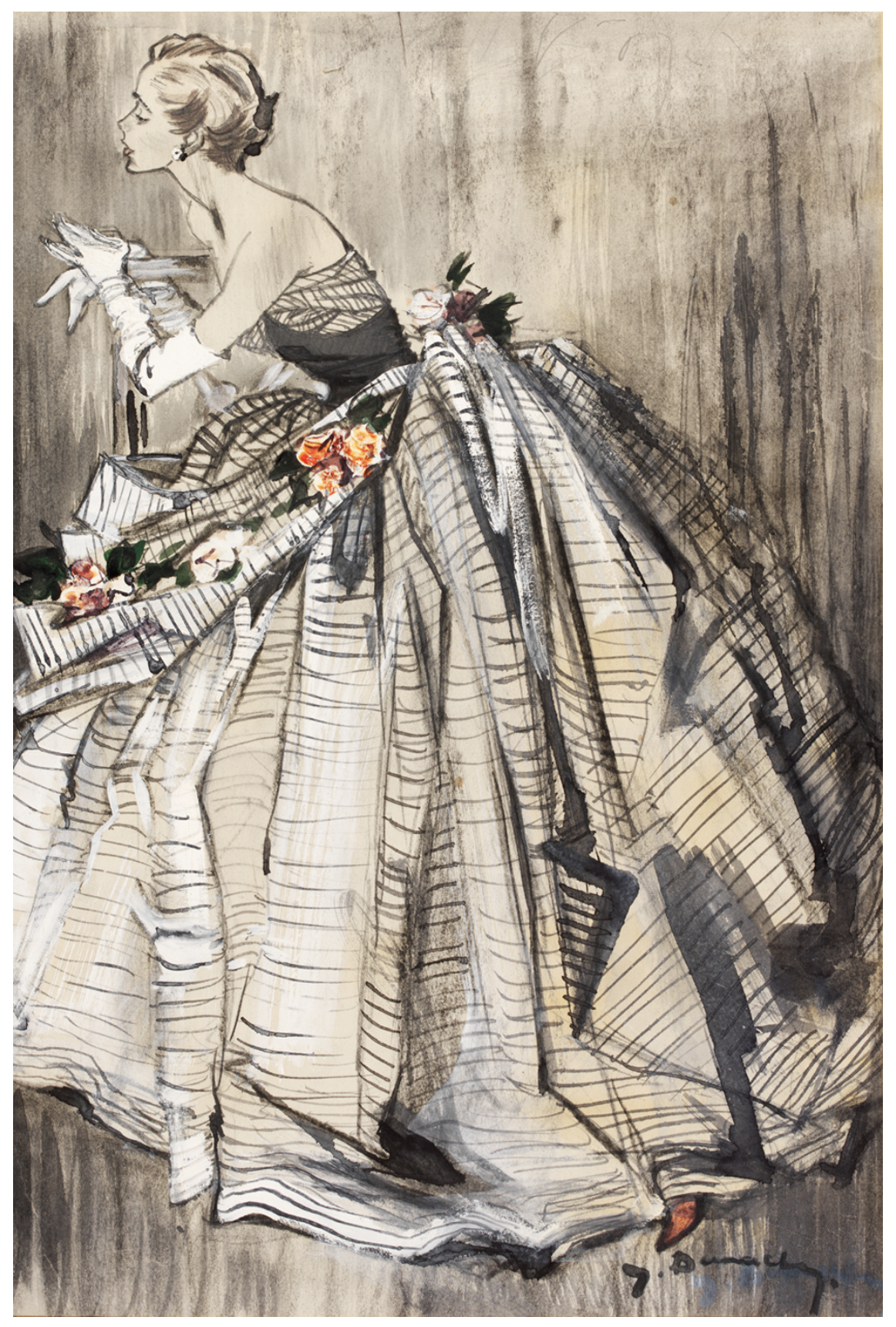
The ‘Swinging Sixties’ was defined by the explosion of youth rebellion against the rules and standards set by their elders, which they had always been expected to follow, including with regards to the clothes they should wear. By now the mass production of clothes, access to higher wages and the opening of several fashion schools and colleges in London, at which clothes aimed specifically at the youth were designed, meant that the younger generation had easy access to trendy, creative fashion not previously seen. Perhaps the miniskirt, designed by Mary Quant, is the most famous example of the fashion from the 1960s.
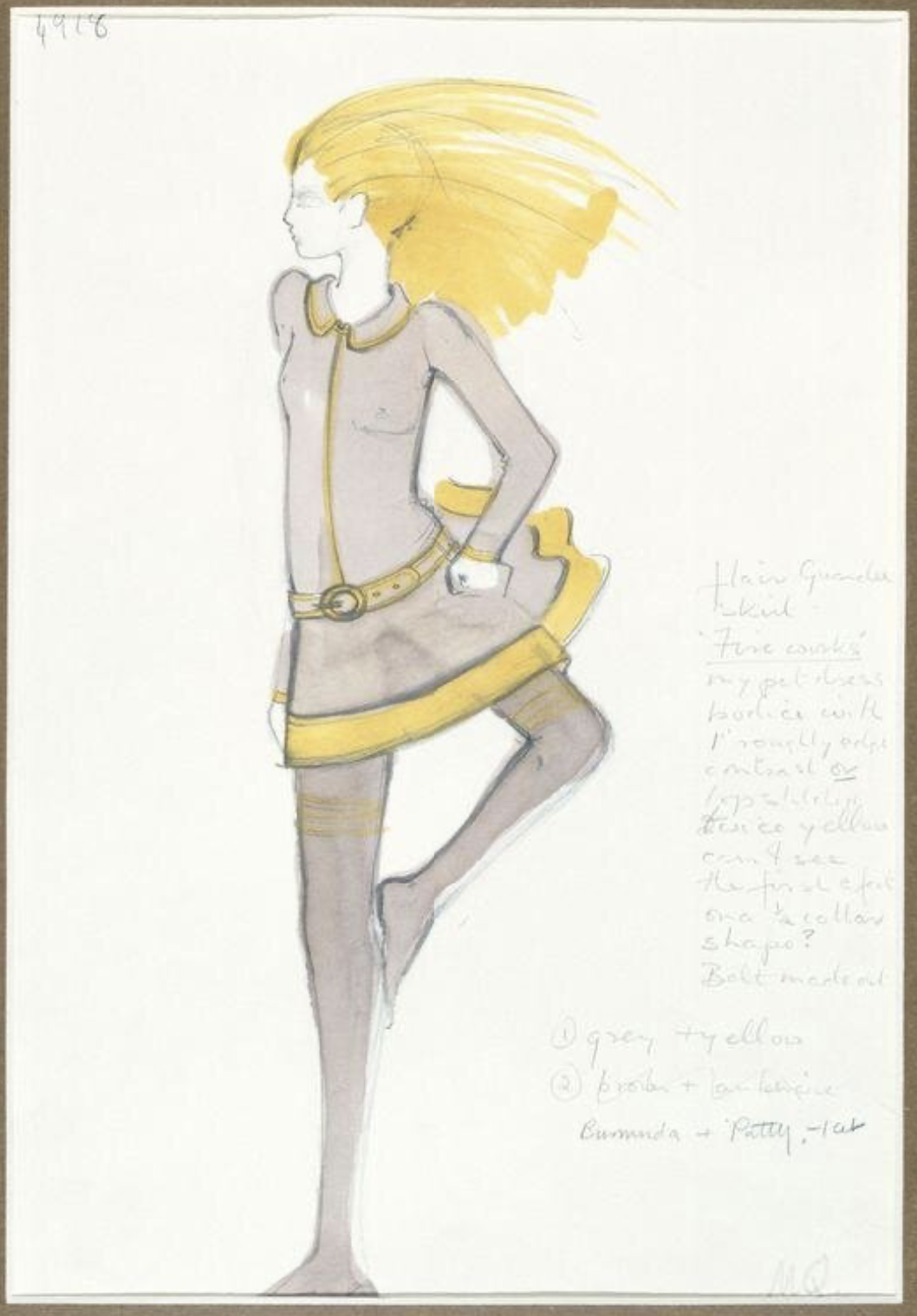
Source: V&A Museum.
When compared with just 10 years previously, let along the beginning of the century, it is quite astounding how different the fashion for women had become, as apparent in the style of the accompanying illustrations. The drawings were becoming much sketchier in style, almost as though the sole purpose was for the design process rather than selling the outfit to an audience. By the end of the 1960s, even fashion for the more mature lady became more relaxed, with looser fits and shorter skirts.
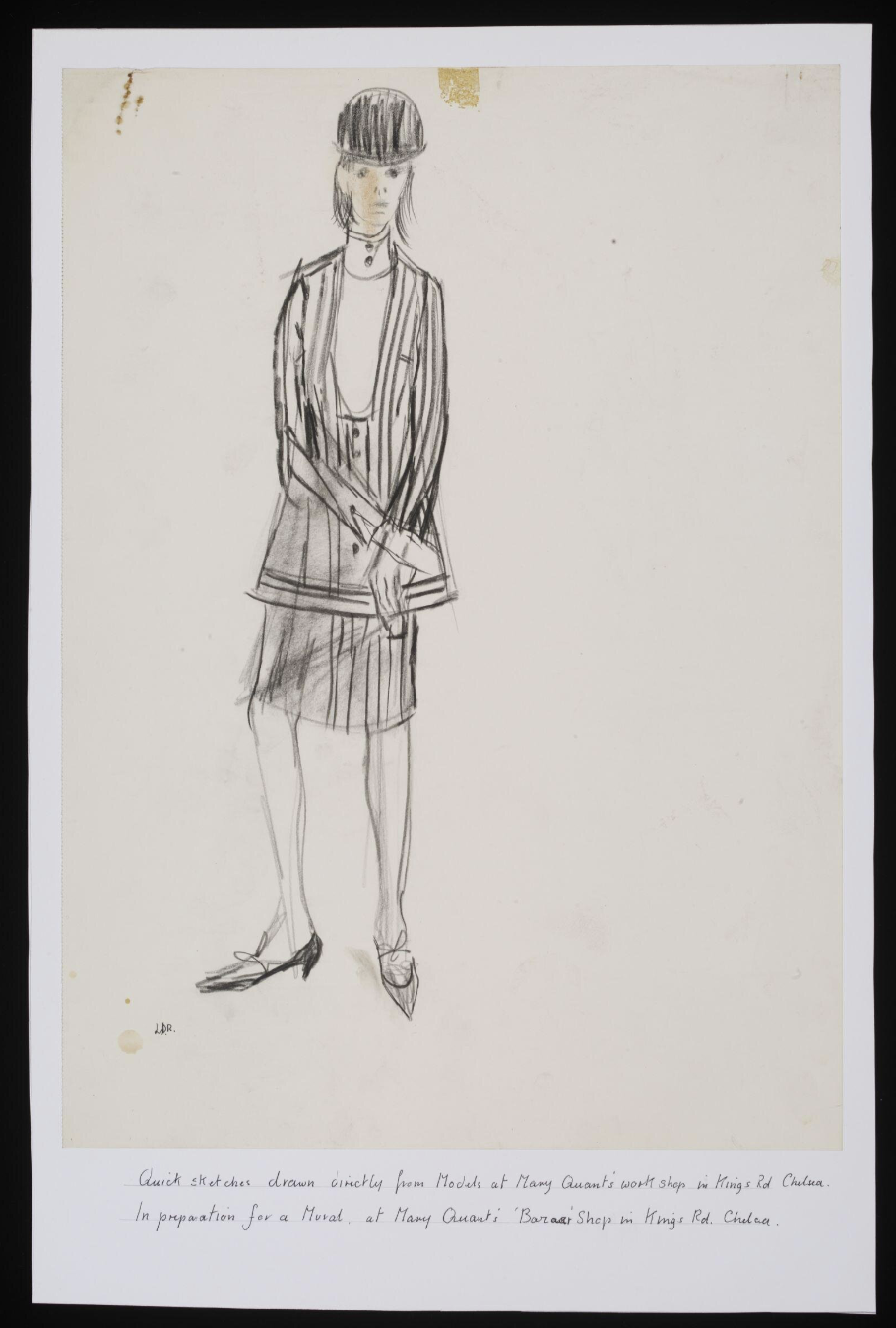
By the late 1960s and into the 1970s, many fashion designers became increasingly theatrical with their output as well as being influenced by other cultures, as demonstrated by the designs of Zandra Rhodes.
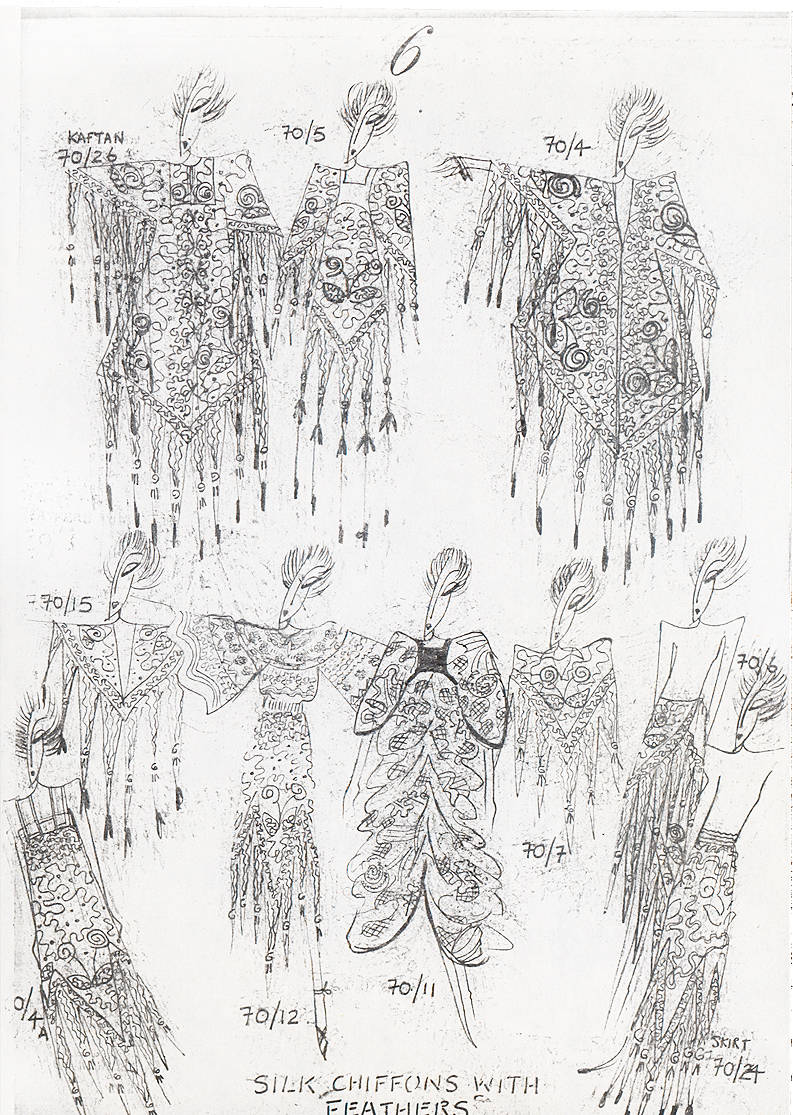
Individuality was a dominant trend of the 1970s, with punk being an obvious example of rebelling against the ‘Establishment’ and relatable to those suffering during the economic downturn and the resultant high levels of unemployment. Punk could be described as a reaction to the endless positivity promoted by the hippy movement of the 1960s. The designer Vivienne Westwood was at the forefront of punk fashion, which was based on anarchy and dissent.
Bright colours, combining different materials and collaborating with artists such as Andy Warhol were all different methods employed by fashion designers during the 1970s. Bill Gibb was another well-known designer from this period, famous for combining different colours and fabrics in his clothing, which can also be seen in his illustrations to which he attached swatches.
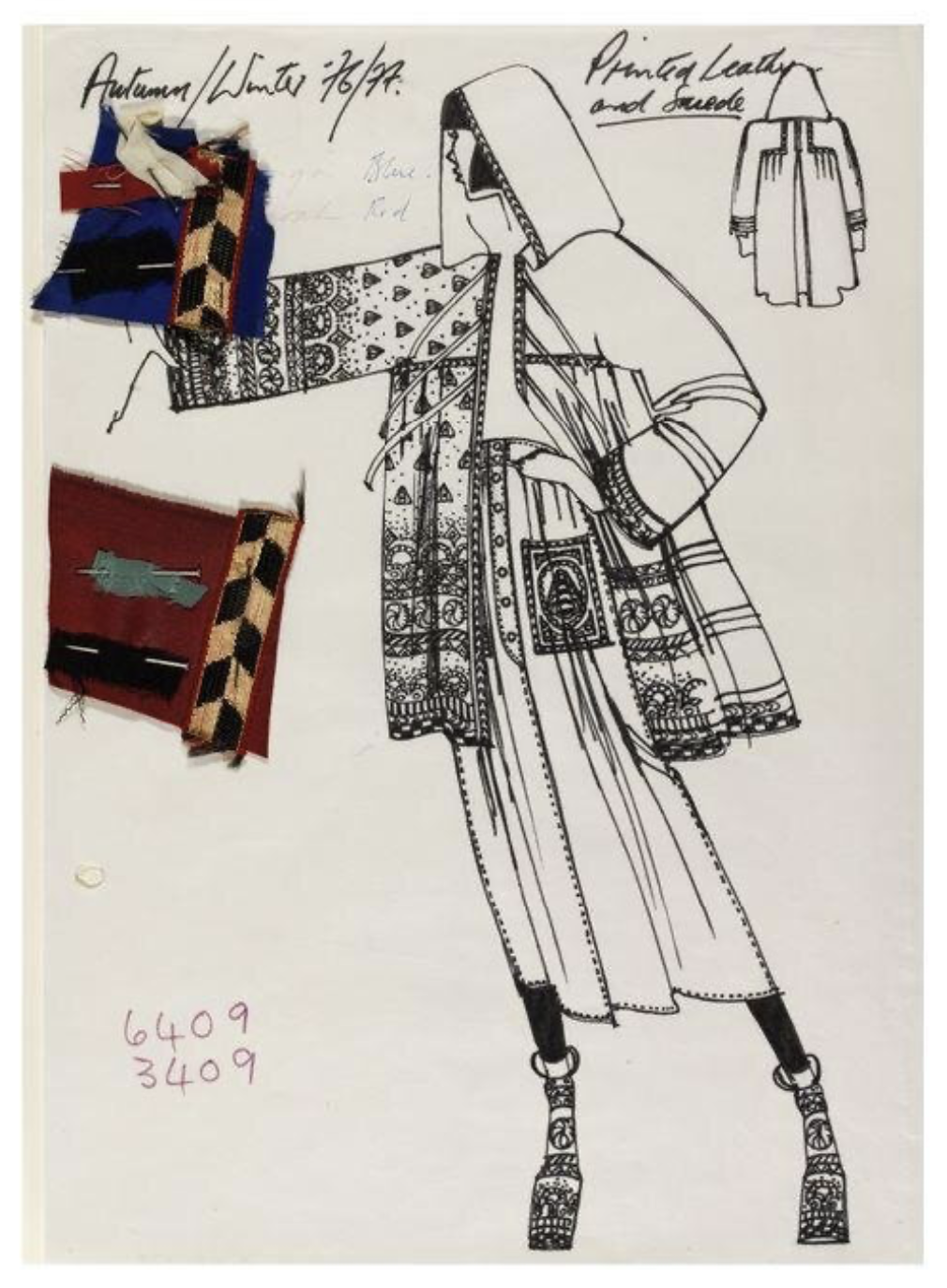
By the 1980s the use of illustrations in fashion magazines and adverts underwent a revival, perhaps as they were now seen as unusual and fresh due to the prior dominance of photography. Punk culture continued to thrive during this decade, but the increasing number of women moving into the workplace resulted in a new trend called ‘Power Dressing’, with big shoulder pads perhaps being the defining image. Extravagant evening wear was also popular.
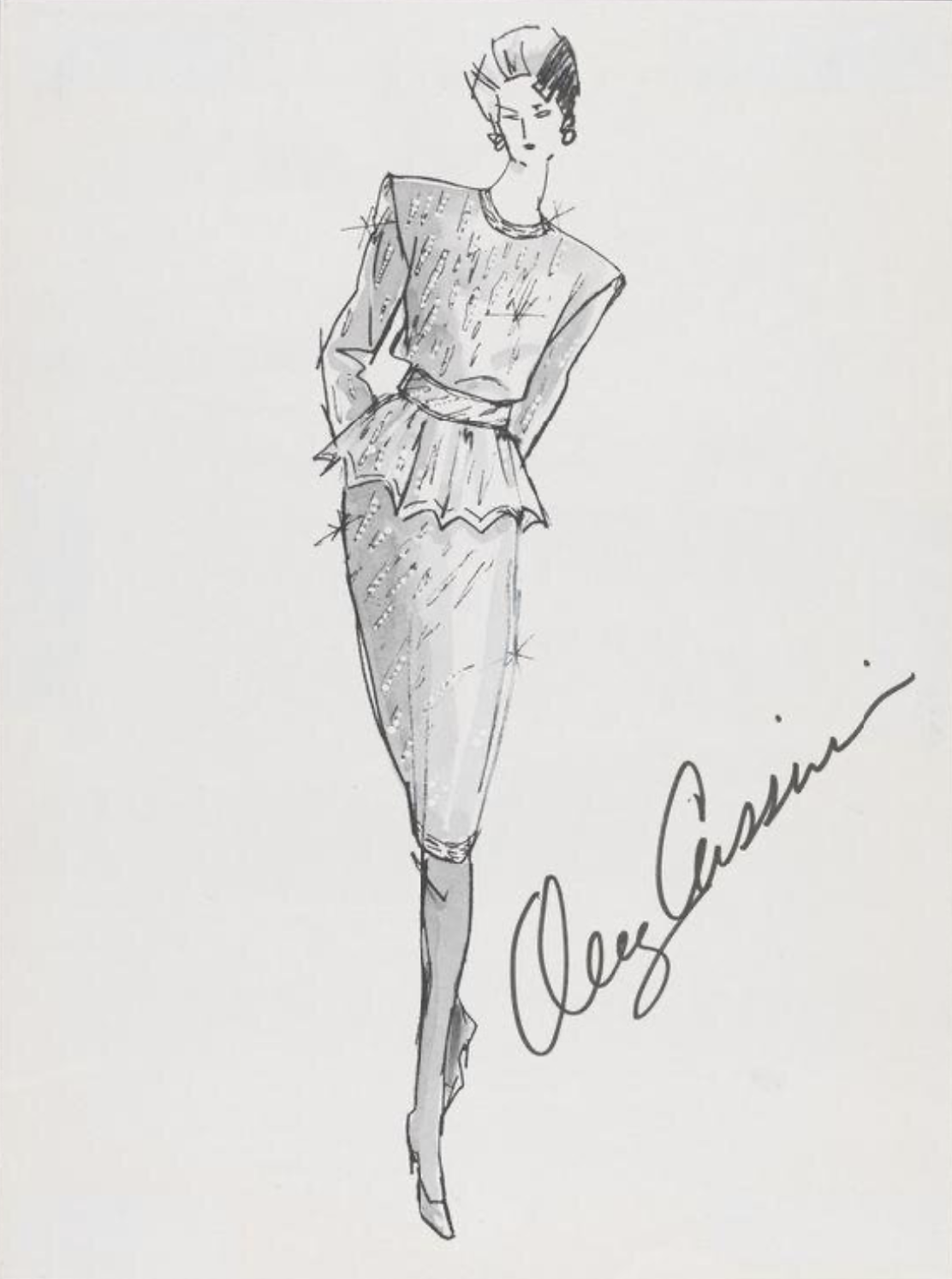
Since the 1990s the boundaries between art and fashion illustration has been well and truly blurred. Photography is able to capture the finer details of clothing, so illustrators are now completely free to create less representative drawings, verging on the abstract, that can focus on telling the garment’s ‘story’, boosted by the introduction of digital software, such as Adobe Photoshop and Illustrator, and, even more recently, by social media such as Instagram. There is a much greater focus on being inventive. Besides this new technology, however, there has also been a revival of traditional analogue fashion illustrations, and the increasing popularity of collaborations between fashion designers and illustrators.
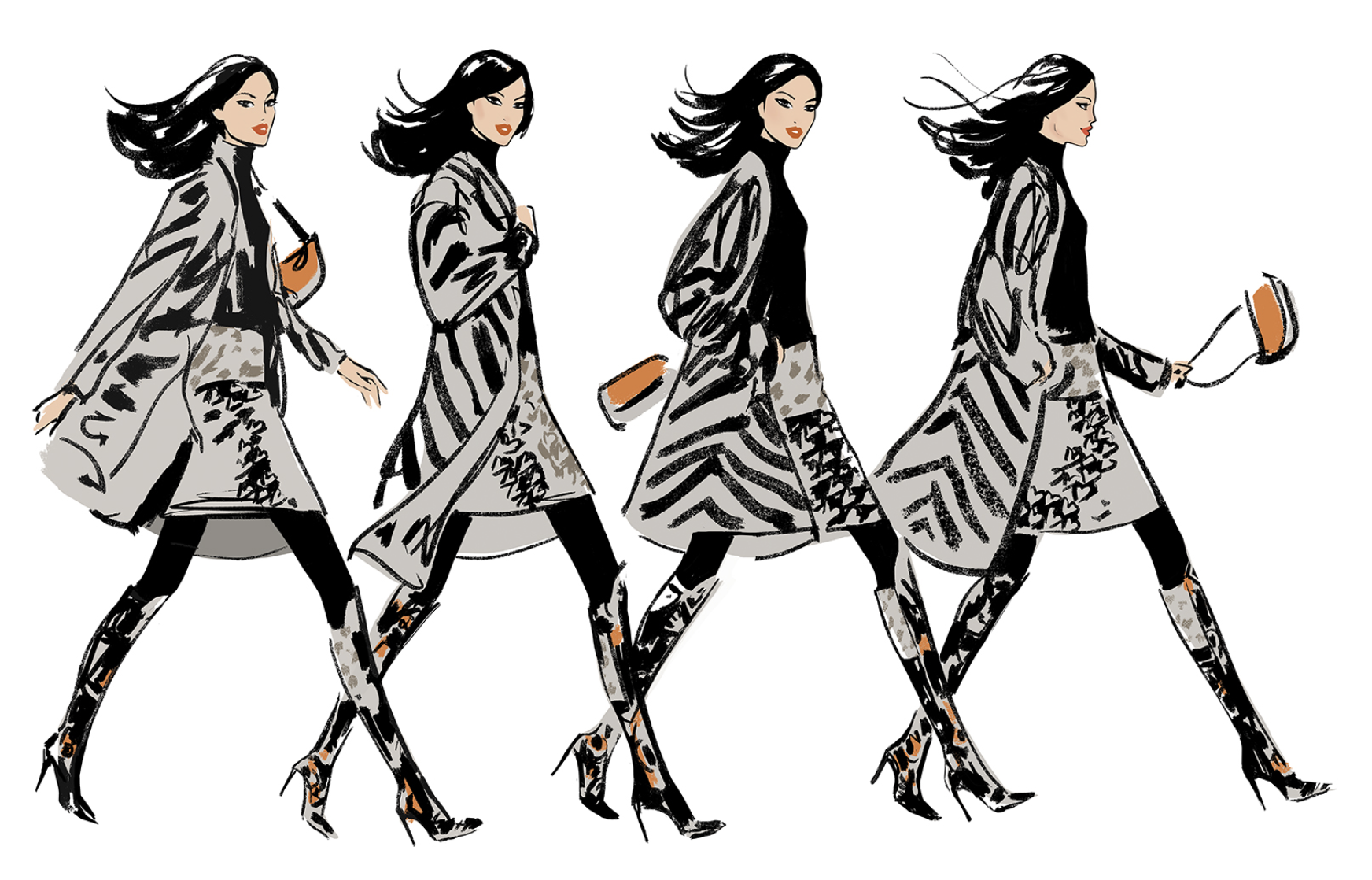
Additional Notes from Research
Fashion illustration has tended to be strongly influenced by the art trends at the time. For example, during the 1920s, many fashion illustrations were drawn in the style of Art Deco, as can be seen below in an illustration by Charles Martin.
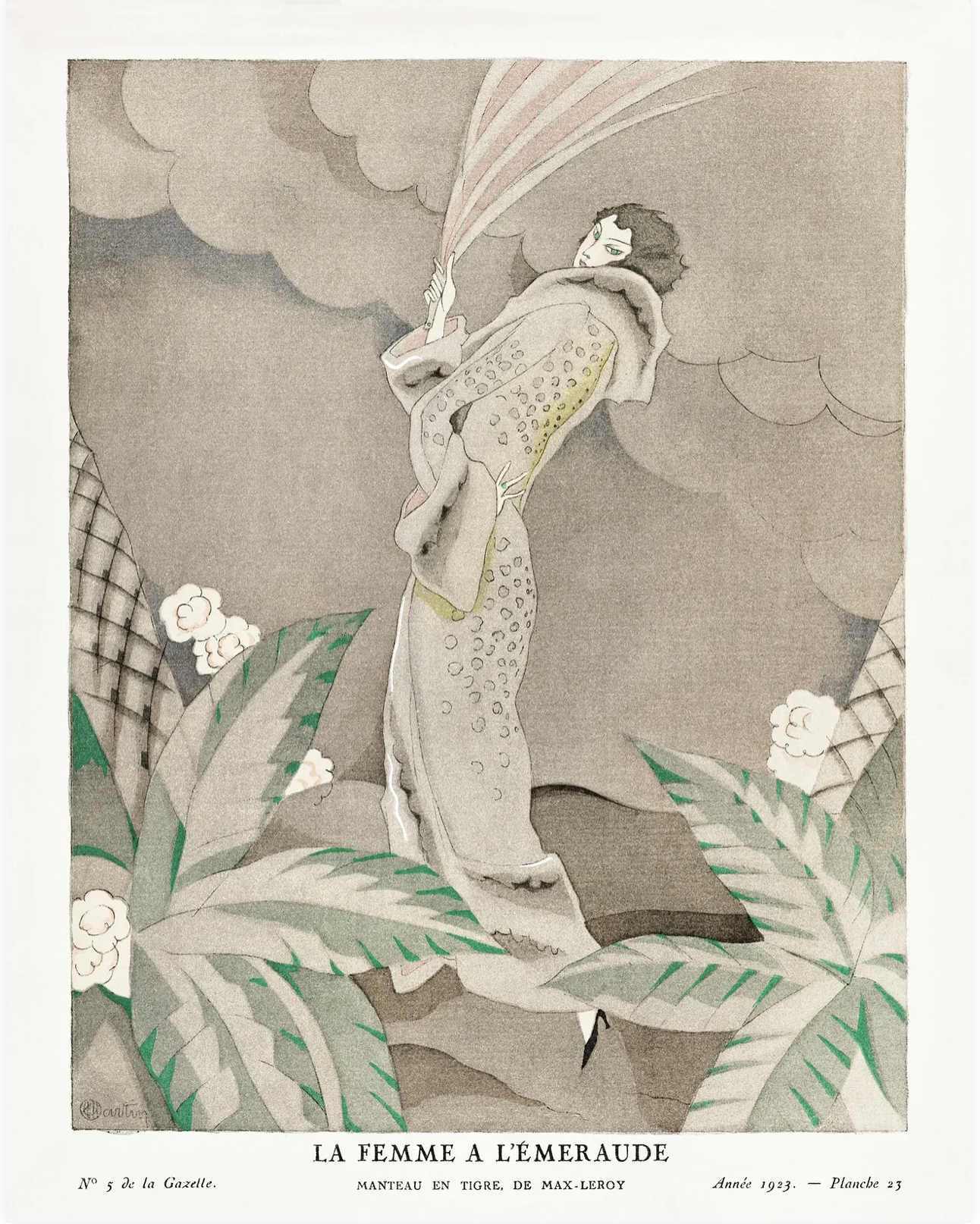
Another example is the Italian designer Elsa Schiaparelli who collaborated with Surrealist artists, such as Dali, to create clothes/accessories that were based on objects such as shoes, lollipops and a chests of drawers!
Questions from Brief
Is there a difference between the imagery created by the fashion illustrators from the early twentieth century to the 1950s and those since the 1990s?
From my research, it is apparent that the imagery created by fashion illustrators has gradually become less descriptive of the outfits being depicted. The earlier illustrations are much more posed and restrained compared to those since the 1990s. For example, if one compares the illustration by Ernest Raudnitz at the beginning of the research above to those created by David Remfry for Stella McCartney in 2002, below, the difference is clearly stark.
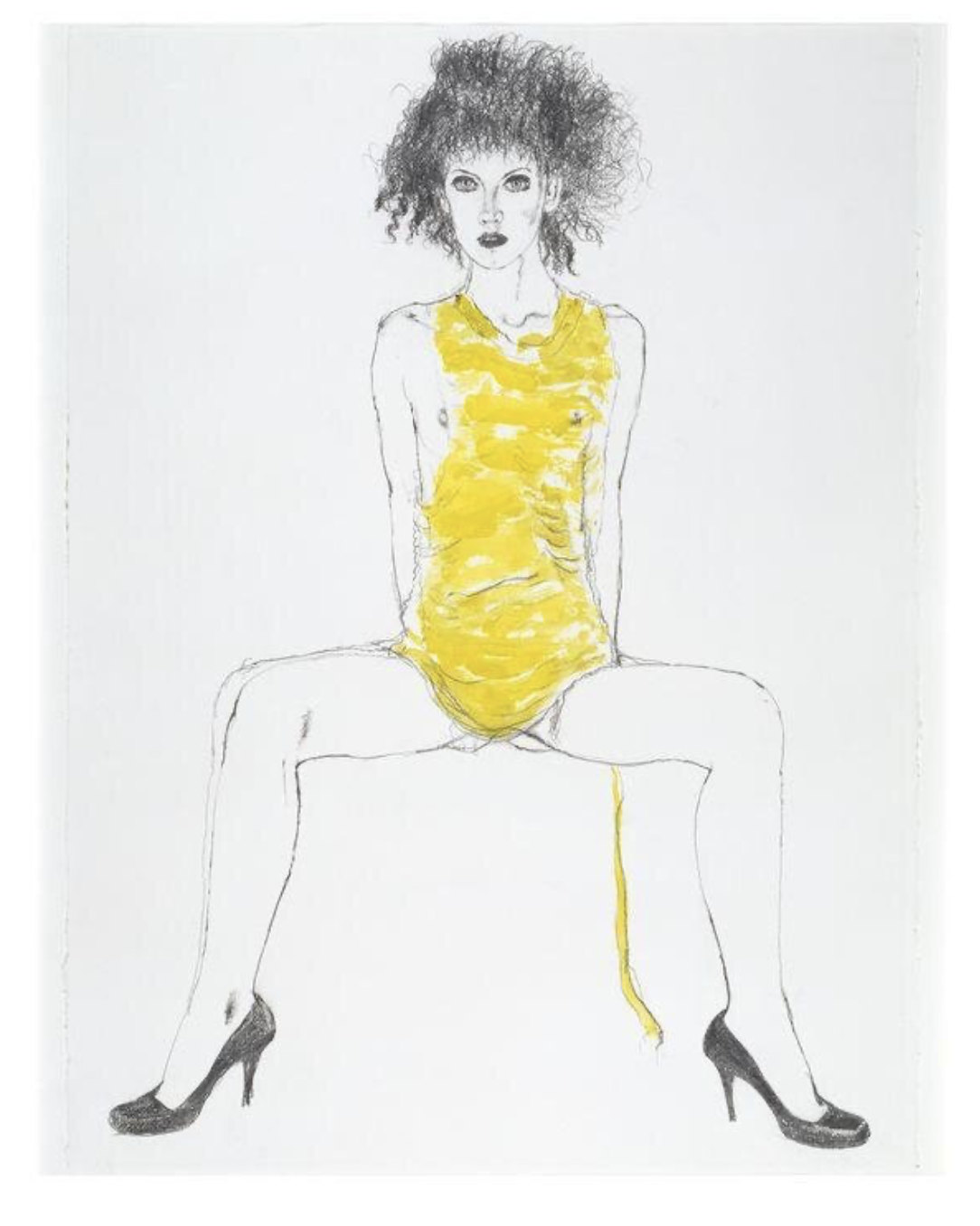
Has fashion illustration changed over this period or is it the fashion of illustration that has changed?
As previously stated fashion illustration has been influenced by the art movements/trends of each decade in question. Additionally, it has evolved in reaction to global events, culture, politics, economics, technology, among countless other influences – just as has been the case with traditional art and illustration. Another note to point out is that the tools used by illustrators has also changed, ranging from prints at the beginning of the 20th century right the way through to computer generated imagery in the present day.
What about the missing decades of the 1960s, 70s and 80s? Was there no fashion illustration taking place during this period?
Through my research I found plentiful examples of fashion illustrations from this period. Although these were not found in magazines or adverts, it seems possible that the main purpose of these was as part of the design process.
Bibliography
Blackman, C. (2007) 100 Years of Fashion Illustration. London: Laurence King.
Brooks, J (n.d.) Fashion – Jason Brooks. Available at: https://www.jason-brooks.com/fashion/ (Accessed: 9 January 2023 ).
Campbell Coyne, H. (2020) Fashion Illustration in the 1920s. Available at: https://delart.org/fashion-illustration-in-the-1920s/ (Accessed: 9 January 2023).
Raw Pixel (n.d.) Charles Martin Fashion & Costume Designs. Available at: https://www.rawpixel.com/board/1325412/charles-martin-fashion-costume-designs-public-domain-illustrations (Accessed: 9 January 2023).
V&A Museum (n.d.) An Introduction To 1960s Fashion. Available at: https://www.vam.ac.uk/articles/an-introduction-to-1960s-fashion (Accessed: 9 January 2023).
V&A Museum (n.d.) Explore The Collections. Available at: https://collections.vam.ac.uk/ (Accessed: 9 January 2023).
V&A Museum (n.d.) Fashion Drawing and Illustration in the 20th Century. Available at: http://www.vam.ac.uk/content/articles/f/fashion-drawing-in-the-20th-century/ (Accessed: 9 January 2023).
VADS (n.d.) Online Resource for Visual Arts. Available at: https://vads.ac.uk/ (Accessed: 9 January 2023).
WikiArt (n.d.) Costumes Parisiens Fashion Illustration No.91 from Journal Des Dames Et Des Modes, 1913. Available at: https://www.wikiart.org/en/george-barbier/costumes-parisiens-fashion-illustration-no-91-from-journal-des-dames-et-des-modes-1913-1913# (Accessed: 9 January 2023).